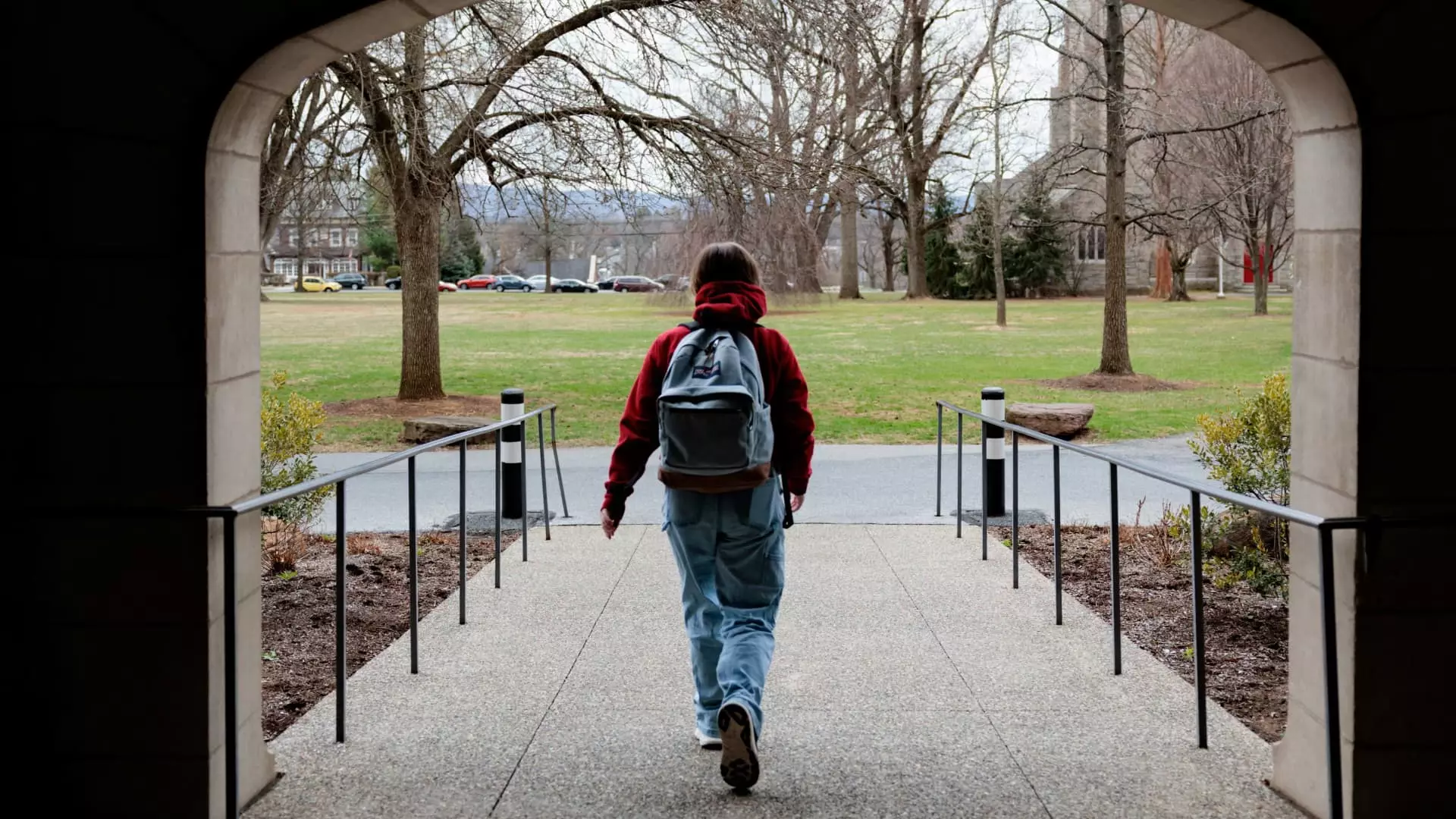The U.S. Department of Education’s recent decision to re-open applications for income-driven repayment (IDR) plans is a precarious move that illustrates the ongoing chaos in America’s student loan landscape. With millions reliant on these repayment schemes, including Income-Based Repayment and Pay As You Earn, the reopening feels like a double-edged sword—a necessary lifeline tangled in bureaucratic strife and shifting political narratives. By reinstating the applications, the Department is essentially resuming a service that was unjustly sidelined earlier this year by the Trump administration, under what can only be described as a convoluted excuse tied to a court ruling.
The Dark Legacy of Political Interference
Political games surrounding student loan repayment are not new, but the toll they take on borrowers remains alarmingly understated. The Trump administration’s abrupt withdrawal of online applications for IDR plans earlier in the year demonstrated a disturbing trend—one where the rights of borrowers are sidelined by political maneuvering. Consumer advocates and the American Federation of Teachers have rightly criticized this move, alleging that the appeals court ruling has been misconstrued to serve an agenda that neglects the financial realities faced by millions. Such political interference compounds an already torturous path for graduates who are doing their best to navigate the ramifications of debt incurred in pursuit of education.
Complications in a Continuing Crisis
IDR plans were conceptualized in the 1990s to alleviate the financial burdens on borrowers, making their repayments manageable by capping monthly payments relative to discretionary income. Yet, the very systems designed to assist borrowers now add layers of confusion and frustration, leaving many questioning their effectiveness. As the Education Department reinstates these applications, it’s crucial to ask—do these plans offer genuine solutions or merely reinforce existing structures that prioritize fiscal management over the lives of real people?
Moreover, the news that there are currently over 12 million individuals enrolled in IDR plans shines a light on the deeper systemic issues within the educational financing structure. Experts like Mark Kantrowitz have pointed out that borrowers not only seek lower monthly payments; they also battle for forgiveness after decades of payments. When a system so essential is reverted to a tool of governmental flux, it reveals a profound inconsistency that undermines the very purpose of these plans.
What Lies Ahead for Borrowers?
The reopening of IDR applications has not ushered in a wave of optimism; rather, it feels like a Band-Aid on a festering wound. As the complexities of student debt mount, borrowers are left wondering if their participation in these plans will yield the relief they are promised. With the political landscape continuing to shift unpredictably, the uncertainty surrounding these plans only exacerbates the anxiety felt by millions who are desperate for clarity.
In an age where education is increasingly tied to long-term financial consequences, the ineffectiveness of political decision-making becomes painfully evident. The reopening of these applications might seem like a step forward, yet the chaos and inconsistency that characterize student loan repayment plans suggest a system that is in dire need of reform, not just restoration.

